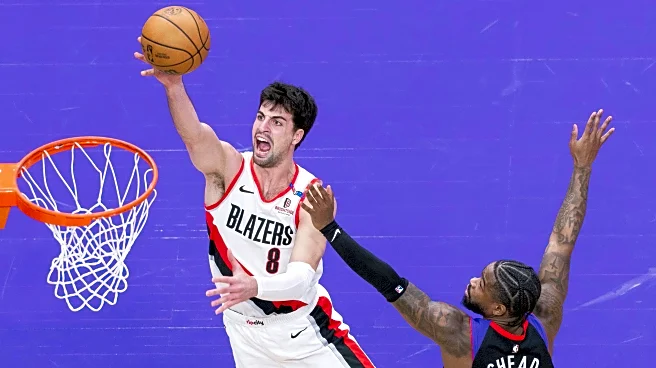What is the story about?
What's Happening?
The Indiana Pacers have signed veteran point guard Cameron Payne to strengthen their roster following Tyrese Haliburton's torn Achilles. Payne, a 6-foot-3 left-handed player, was a free agent before joining the Pacers. Last season, he played for the New York Knicks, appearing in 72 regular season games and averaging 6.9 points per game. Payne, who was the 14th overall pick in the 2015 NBA Draft by the Oklahoma City Thunder, has also played for several other teams, including the Chicago Bulls, Cleveland Cavaliers, Phoenix Suns, Milwaukee Bucks, and Philadelphia 76ers. The Pacers made room for Payne by waiving Delon Wright, who suffered a head injury during the preseason opener.
Why It's Important?
The signing of Cameron Payne is crucial for the Indiana Pacers as they navigate the season without their primary ball handler, Tyrese Haliburton. Payne's experience and ability to contribute as a depth point guard provide the Pacers with a reliable option in the backcourt. His addition is expected to help stabilize the team's performance and maintain competitiveness in the league. The move also highlights the Pacers' proactive approach to addressing roster challenges and ensuring they have adequate coverage in key positions.
What's Next?
Cameron Payne is expected to integrate into the Pacers' lineup and contribute to their gameplay strategy. As the season progresses, the team will likely assess Payne's performance and make adjustments as needed to optimize their roster. The Pacers will continue to monitor Haliburton's recovery and explore additional roster moves if necessary to maintain their competitive edge.
Beyond the Headlines
The Pacers' decision to sign Payne underscores the importance of depth and flexibility in professional sports teams. It also reflects the challenges teams face when key players are sidelined due to injuries. Payne's signing may influence other teams to consider similar strategies in managing their rosters and addressing unexpected player absences.
AI Generated Content
Do you find this article useful?














